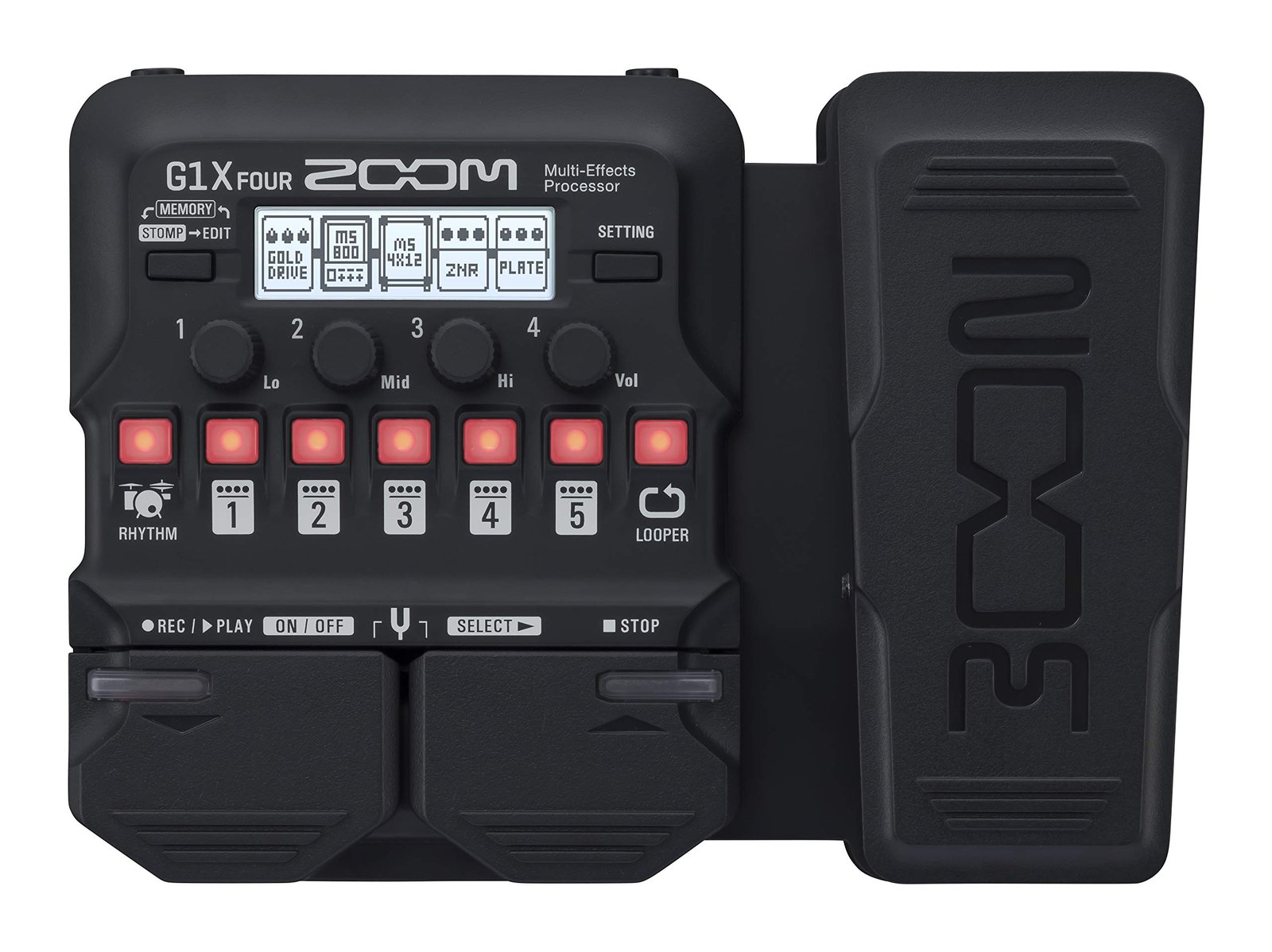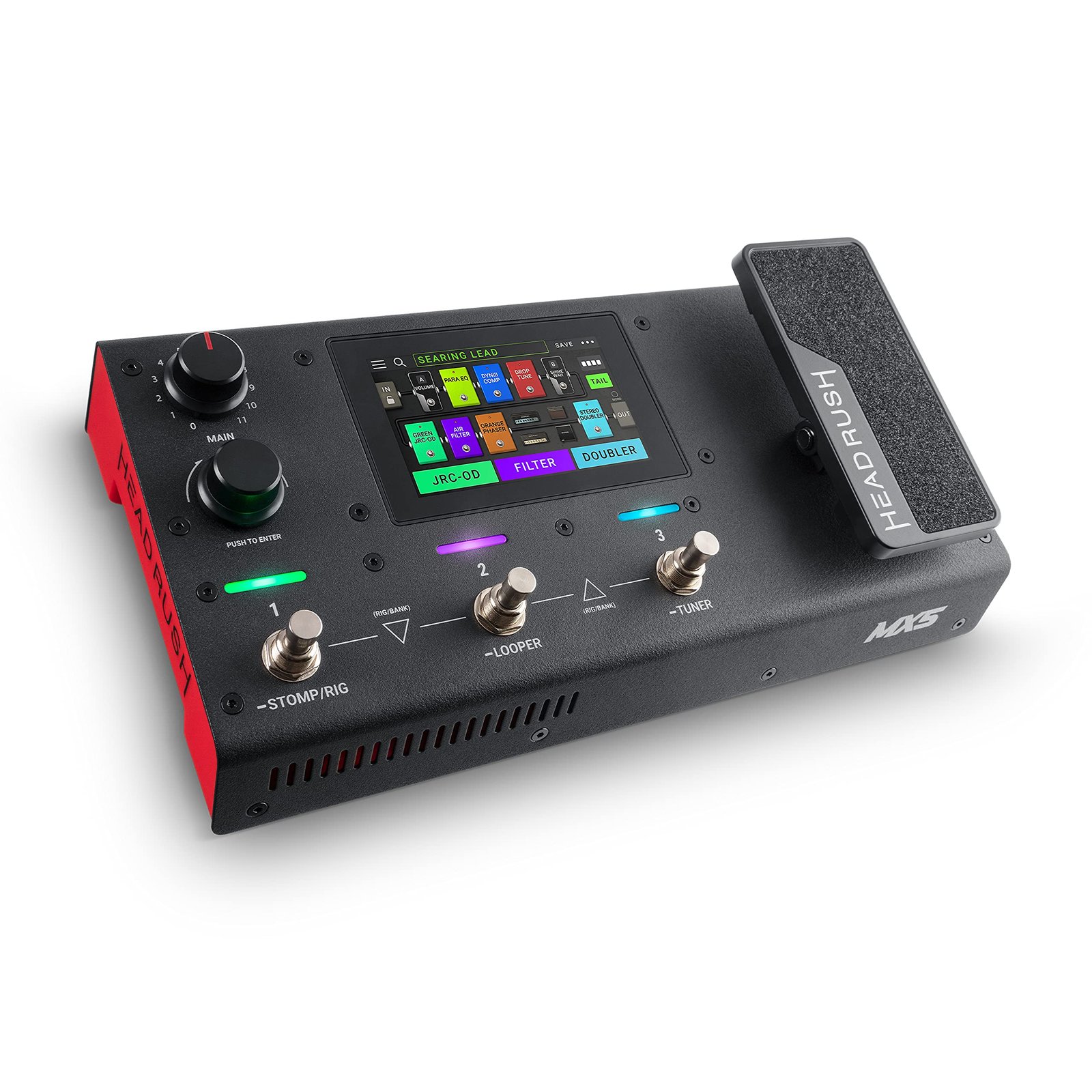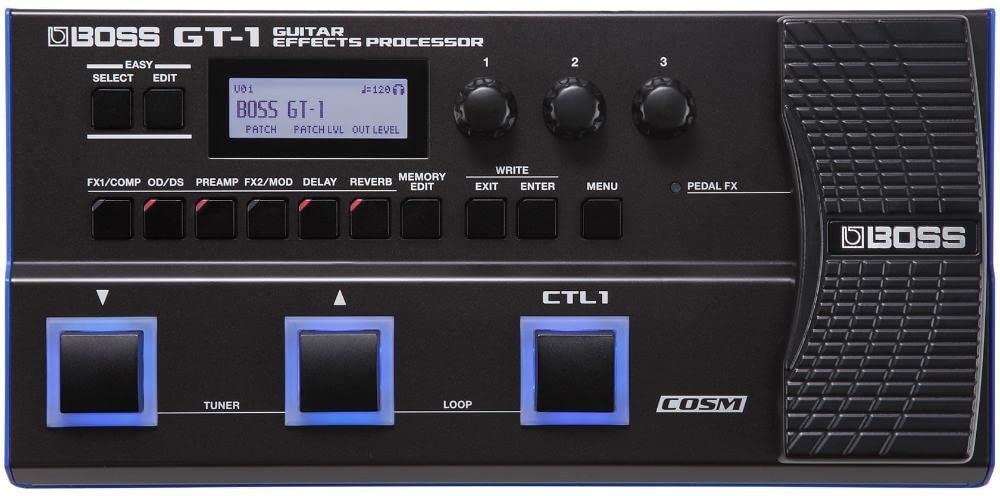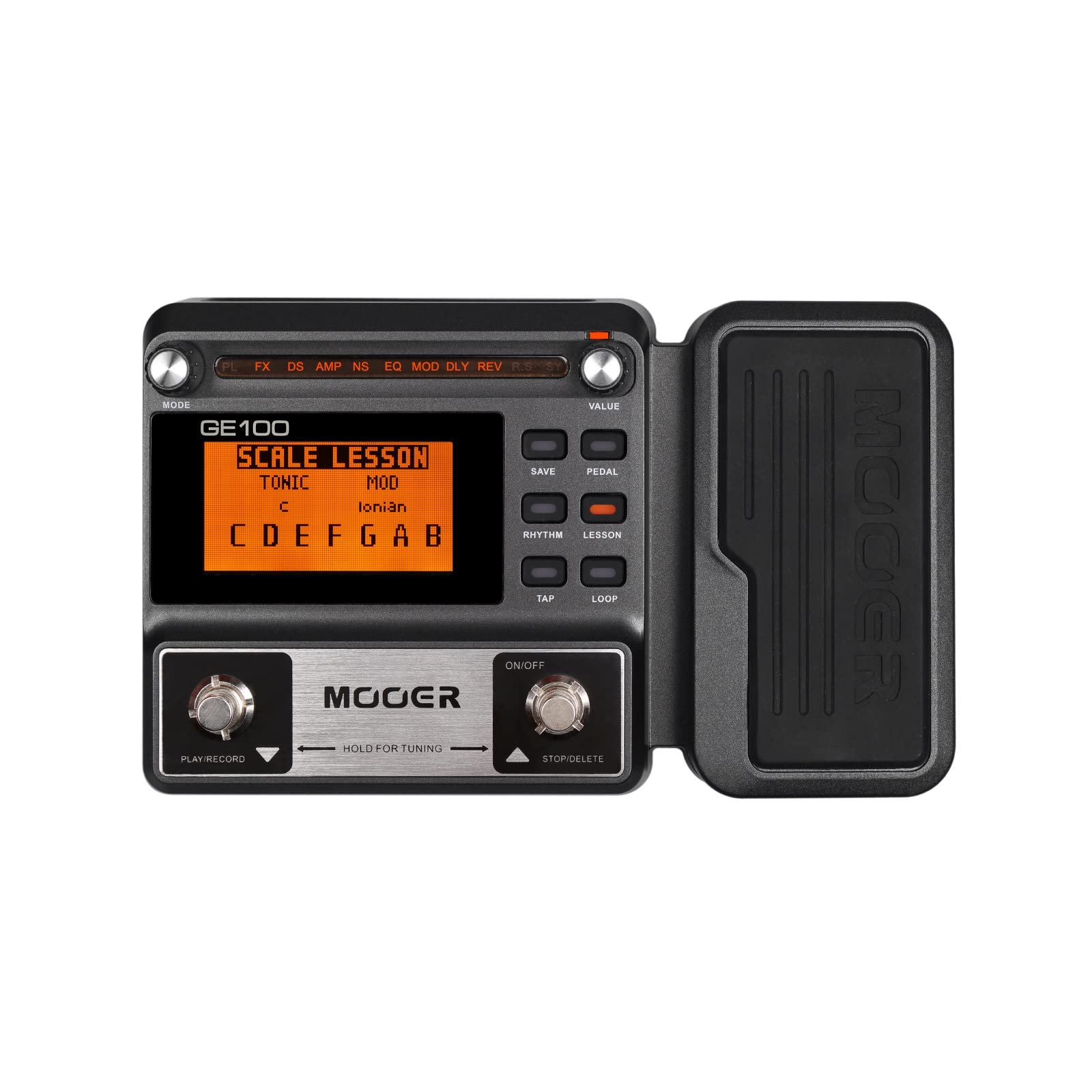In the world of music production, multi-effects processors have become essential tools for musicians and producers alike.
These devices offer a variety of audio effects in a single unit, allowing you to experiment with and enhance your sound.
Whether you’re a guitarist looking for the perfect reverb, a vocalist needing a touch of compression, or a producer wanting to add depth with modulation effects, multi-effects processors provide versatile solutions for your audio needs.
When considering which multi-effects processor to purchase, you need to consider key factors like the range of effects offered, ease of use, and build quality.
Some units prioritize a wide array of effects, while others focus on delivering high-quality sound for fewer effects.
User interface is another crucial aspect, as a confusing setup can hinder your creativity.
Portability might also be a concern if you plan to use your processor on the go.
By choosing the right multi-effects processor for your needs, you can unlock new dimensions in your music and streamline your workflow.
This can lead to more creative possibilities and better-sounding projects.
Top Multi-Effects Processors
Ready to enhance your guitar sound with the best gear around? Check out these top multi-effects processors known for quality and versatility.
There’s something here to meet your musical needs.
Zoom G1X FOUR
A fantastic choice if you’re seeking a versatile and portable multi-effects processor with a wide range of features.
- Offers a vast array of effects and amp models for creative flexibility.
- Comes with an expression pedal for varied effect control.
- Lightweight and easy to carry, ideal for gigs or practice sessions.
- Some users may encounter interference at high gain settings.
- Beginners might find the learning curve steep due to its numerous features.
- May require online resources for comprehensive guidance.
Imagine creating intricate soundscapes with the Zoom G1X FOUR, which packs an impressive collection of over 70 effects and amp models.
Whether you’re starting out or a seasoned guitarist, this processor can add depth to your music.
The compact design means it fits easily into your gig bag, making it a solid option for traveling musicians.
Its expression pedal opens up even more possibilities, giving you dynamic control over your effects.
You would appreciate how this device helps you uncover new dimensions in your guitar playing.
While it’s exciting to explore its many features, new users might initially find the setup a bit challenging.
Still, with a bit of patience and maybe some help from online resources, you’ll be able to tap into its full potential.
This little powerhouse is not just a gadget but a doorway to endless creativity.
HeadRush MX5 Processor
If you’re looking for a flexible and intuitive multi-effects processor with seamless sound transitions, the HeadRush MX5 may be a great match.
- Intuitive touch screen with swipe and drag functions makes it user-friendly.
- Offers seamless preset switching with reverb and delay continuation.
- Regular firmware updates add new features from user feedback.
- Could be complex for beginners not used to digital gear.
- The equipment has a larger footprint, which might not fit smaller spaces.
- Heavy build may make it less portable than expected.
The HeadRush MX5 stands out with its high-resolution touch display, providing an easy way to manage and tweak your sounds.
Its ability to quickly switch between presets without losing the effect tails ensures a smooth transition during performances.
A diverse array of amp and effects models ensures you have plenty of options to craft your unique sound.
Additional features like the built-in looper and hands-free edit mode provide flexibility to experiment and adjust on the fly.
Though easy for tech-savvy users, absolute beginners might find themselves on a bit of a learning curve due to the MX5’s comprehensive features.
If portability is crucial, consider the processor’s size and weight, but if sound quality and versatility are your primary concerns, this device might just hit the right notes for you.
Valeton GP-200 Multi-Effects Pedal
A versatile choice for musicians seeking a rich variety of effects and seamless connectivity.
- Extensive built-in effects and amp simulations
- User-friendly interface with a bright LCD screen
- Multiple connectivity options, including USB and MIDI
- Lacks certain specific effects like harmonizer and synth
- Can be overwhelming for beginners due to its many features
- Requires additional purchase for more third-party IRs
The Valeton GP-200 Multi-Effects Pedal is packed with over 240 built-in effects and 140 amp simulations, making it an attractive option for both guitarists and bassists.
You get the flexibility to experiment with a vast range of sounds, which is particularly beneficial for live performances and studio sessions.
Its vibrant 4.3-inch color LCD screen and easy-to-navigate UI enhance the user experience, enabling smooth adjustments during your sessions.
Connectivity is a strong point for this pedal.
With USB, XLR, and headphone options, plus support for external controllers, you can easily integrate it into a variety of setups.
The addition of MIDI capabilities and OTG support for mobile devices further boosts its versatility.
This makes it a great piece of gear for those who love to tweak their sound on the go.
Despite its impressive features, the GP-200 may feel a bit daunting for newcomers due to its extensive functionalities.
Some users may also miss having harmonizer or synth effects directly onboard.
If these elements are vital to your sound, you might need to explore additional devices.
Nonetheless, for musicians looking to explore an array of tones with plenty of connectivity options, this pedal is worth considering.
Boss GT-1 Guitar Multi-Effects Pedal
For those seeking a portable and versatile pedal without breaking the bank, the Boss GT-1 offers impressive value.
- Compact design makes it easy to carry in a guitar bag
- Simple interface for quick patch selection and editing
- Provides up to seven hours of playtime on batteries
- Might not provide sufficient effects for professional use
- Limited options for preset customization
- Battery life could be longer for extended sessions
The Boss GT-1 is made with musicians on the move in mind.
Its sleek, portable design allows you to toss it in a guitar bag for convenient transportation.
This brings a new level of ease to your busking adventures or gigs where space is limited.
No protruding edges mean you aren’t likely to snag and damage anything during your travels.
If you find the idea of tweaking your sound intimidating, this pedal keeps it simple.
The easy select and edit functions make navigating through different patches quick and straightforward.
This means less time fiddling with settings and more time playing, which is always a plus for both beginners and seasoned players alike.
While the Boss GT-1 excels in several areas, keep in mind that it may not fit the bill for professionals looking for the depth and range of a more elaborate setup.
Additionally, depending on your playing style and frequency, running on batteries might feel like a slight inconvenience if power runs out mid-performance.
Still, for hobbyists or casual gigs, this pedal covers your bases efficiently.
MOOER GE100 Multi-Effects Pedal
If you’re looking for an affordable and versatile multi-effects pedal, the MOOER GE100 offers a solid option with a wide variety of effects for your sound experimentation.
- Diverse effects selection enhances creativity
- Budget-friendly for new users
- Portable with battery-powered option
- May have a learning curve for beginners
- Firmware updates can be challenging
- Limited looper time for complex pieces
The MOOER GE100 packs a punch with its range of preset and user patches, allowing you to craft your unique sound.
You can easily jump between different effects, and the expression pedal brings dynamic control to your performances.
The pedal’s built-in features, like the looper and drum machine, support your practice and performance needs.
Although it might take some time to get used to the settings, the flexibility it provides makes it worth the effort.
The compact design and option for battery power make it convenient for on-the-go musicians.
A slight hiccup with this product could be the firmware updates, which some users find tricky.
The looper’s 180-second limit might also be restrictive for more advanced players looking to create extended pieces.
Yet, for its price, it delivers a well-rounded and flexible experience.
Buying Guide
When buying a multi-effects processor, you have plenty to consider.
Think about what you need it for.
Is it for live performances or studio work?
Focus on user interface.
A simpler interface can save you headaches during a gig.
Look for clear displays and intuitive controls.
Check the range of effects.
It should cover all your needs, from reverb and delay to more exotic options.
Evaluate the sound quality.
Listen to sound samples if possible.
Make sure it delivers high-quality audio.
Consider the portability and build quality.
If you’re on the move, opt for a compact and sturdy design.
Look at the connectivity options.
Determine if it has the ins and outs you require, like USB for computer connection.
Think about your budget and price.
Determine how much you’re willing to spend and assess feature sets within your range.
Make a Check List:
- User Interface
- Range of Effects
- Sound Quality
- Portability
- Connectivity Options
- Budget
By paying attention to these features, you can find the right multi-effects processor that fits your needs.
Frequently Asked Questions
Multi-effects processors for guitarists offer versatile sound options and simplify connecting to amps.
They’re beginner-friendly and allow chaining with other pedals.
Cost-effective choices are available that don’t compromise on quality.
What’s the deal with multi-effects processors for guitarists?
Multi-effects processors are game-changers in the world of guitar playing.
They pack various effects like distortion, reverb, and delay into one unit.
You get the flexibility to explore different sounds without the hassle of swapping multiple pedals, making them ideal for both practice and live performances.
Any tricks to connecting a multi-effects pedal to an amp without a hassle?
Setting up can be straightforward if you know the tricks.
Use a standard instrument cable to connect the pedal’s output to your amp’s input.
Adjust the amp settings to a neutral EQ to get the best output from your processor.
Experiment with levels to fine-tune your sound.
What’s the easiest multi-effect pedal for beginners to get the hang of?
Look for processors with user-friendly interfaces, like those with presets and simple navigation menus.
Entry-level models from brands like Boss or Zoom are known for their intuitive controls and good sound quality, making them perfect for beginners eager to dive into effects without a steep learning curve.
Is it cool to chain multiple guitar pedals together, and how’s that done?
Absolutely, chaining pedals can create unique soundscapes.
Start by ordering them logically—compressors to overdrives to delays.
Use patch cables to connect them.
Begin with the first pedal plugged into your guitar, and the last one into your amp.
This setup allows for creativity and experimentation with sound.
What’s a good low-cost multi-effects pedal that doesn’t skimp on quality?
Brands like Zoom and Mooer offer affordable options that maintain solid performance.
Zoom’s G1 series, for instance, provides a wide range of effects for a decent price.
Look for features like amp simulations and a variety of onboard effects to ensure you’re getting the most bang for your buck.
What’s the scoop on the best multi-effects processors that won’t break the bank?
If budget’s on your mind, invest in models like the Line 6 POD series or Boss ME-80.
These processors offer extensive effects libraries, durable builds, and intuitive interfaces.
They balance quality and price, allowing you to achieve professional sounds at a fraction of typical costs.






